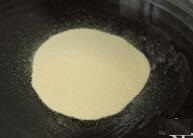General Description
Indium tin oxide (ITO, or tin-doped indium oxide) is a mixture of indium(III) oxide (In2O3) and tin(IV) oxide (SnO2), typically 90% In2O3, 10% SnO2 by weight.
In powder form, indium tin oxide (ITO) is yellow-green in color, but it is transparent and colorless when deposited as a thin film at thicknesses of 1000-3000 angstroms. When deposited as a thin film on glass or clear plastic it functions as a transparent electrical conductor.
ITO is normally deposited by a physical vapor deposition process such as D.C. magnetron sputtering or electron beam deposition. Less frequently, ITO can be incorporated in inks using an appropriate film-forming polymer resin and solvent system, and deposited by screen printing albeit with lower transparency and conductivity compared to a physical deposition process.
Of the various transparent conductive oxides (TCOs), ITO is considered the premium TCO, having superior conductivity and transparency, stability and ease of patterning to form transparent circuitry. ITO is used in a number of display technologies, such as LCD, OLED, plasma, electroluminescent, and electrochromatic displays, as well as in a number of touch screen technologies.
Further uses of this versatile material include antistatic indium tin oxide coatings, EMI shielding, photovoltaic solar cells, aircraft windshields, and freezer case glass for demisting. Yet further applications for ITO are as an infrared reflecting coating to reflect heat energy such as in low-E glass and in low-pressure sodium lamps.

Uses
Indium tin oxide (ITO) is a transparent conducting oxide (TCO) material that finds applications, LCD, OLEDs, touch screens, solar cells etc.






